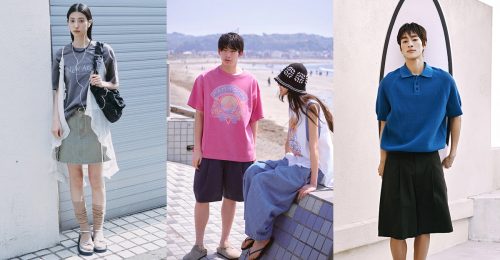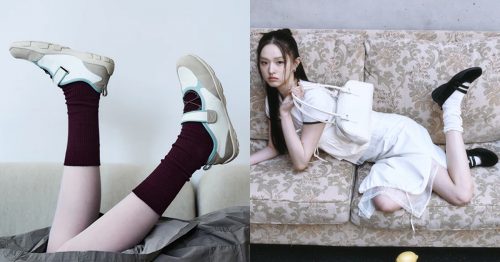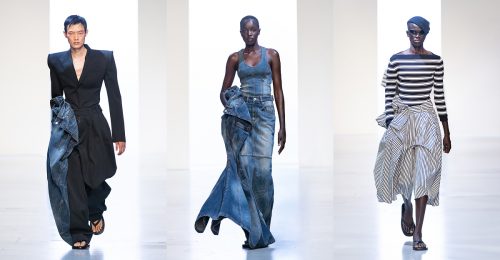When it comes to fashion choices, each generation has its own particular flavor and style. Millennials and Generation Z, those born between roughly 1981 and 2005 and known collectively as “Generation MZ,” prefer a splash of individuality and are more selective about deciding what to buy.
The Financial Times recently reported that this cohort can be divided into two main groups: those who are trend-focused and who make up the major customers of fast-fashion labels, and those who pursue more sustainable values. Both groups have in common a hunger for newness and affordability as well as a desire for experiences.
Experiencing the joy of shopping
As consumers, Generation MZ shoppers put experiences high on their list of priorities. Acquiring a new garment is a process and the feeling while going through it must also be enjoyable. That challenges offline sellers to make their stores more interesting and exciting and online outlets to make their website user experiences more engaging, fun, and hassle-free.
The joy of discovering something new through online social media channels, at a short-lived pop-up store, or a flea market is just as important to younger consumers as the acquisition of new items. Also, as a Forbes writer explained in 2020, “Gen Z shoppers want to interact with brands that understand them. They want to be heard and become a part of the creative process.” The mere rumor that Swedish fashion label H&M would open an online outlet in the metaverse created excitement on social media because it spoke to younger consumers’ preference for experience- and engagement-based shopping.
In the burgeoning luxury apparel market as well, Generation MZ shoppers are moving online through apps like MustIt, Catch Fashion, Balan, Trenbe and more. Not only is it more convenient than going to a store, but the experience of finding a sought-after item that is not even available offline in most outlets adds to the fun of shopping like the thrill of a hunt. Growth rates for these luxury apps are impressive. To cite just one example, Trenbe saw its total sales figure for 2020 exceeded in the last two months of 2021.
Furthermore, Generation MZ shoppers are more likely than older consumers to consider a garment’s resale value before buying it, making the cycle of clothing acquisition, use and disposal a very different experience. As a result, platforms that sell or rent pre-loved clothing are booming. For instance, the Korean market for used goods in 2020 was almost 17 billion US dollars and that is expected to grow by a quarter again for 2021 figures. Not to be outdone by generalist secondhand platforms like Danggeun Market, established brands like department stores and luxury labels are getting in on the action, launching their own apps or partnering with existing platforms.
There are also interesting online-offline hybrids such as the top brand sneaker resale platform Kream. Prospective sellers send their pre-loved footwear to Kream for authentication, after which they can be advertised on the app. However, they can also be seen at an offline store.
Another option popular with younger fashionistas is clothing rentals. The experience of trying a new outfit or look, wearing it for a while and then returning it appeals to Generation MZ shoppers who want to do something that is kind to the environment without overfilling their wardrobes. In essence, it is buying an experience rather than items of clothing. In 2021, Vogue magazine reviewed seven clothing rental services, in a possible sign that the experience-centered preferences of Generation MZ are being taken seriously.
Sustainable after a fashion
Buying or renting second-hand clothing is strongly connected to the interest of Generation MZ in sustainable consumption. In September 2021, online magazine Sustainability ranked a list of the top 10 secondhand clothes shopping sites, but it goes beyond that.
In a global survey of young consumers by Credit Suisse, it was revealed that about twice as many consumers in developed countries intend to increase consumption of sustainable fashion relative to those who intend to decrease consumption. That translates into greater interest in textiles that are made in a way that is kinder to the environment, produces less industrial waste, and produce clothes that last longer.
Environment-friendly cotton is being used more often in garments: the raw cotton is grown in a sustainable way and the dyeing and processing uses less chemicals that are harsh on the environment. Another increasingly popular sustainable technique is to incorporate recycled materials into clothing.
Left: 8seconds Ash cotton denim trucker jacket relaxed fit
Center: GANNI Recycled Polyester Oversized Puffer Midi Jacket – Yellow
Right: Green Beanpole Sky blue volume B logo sweatshirt
Bringing back Y2K
In the fashion world one maxim above all others is accepted as a self-evident truth, namely “fashion trends are cyclical.” Cycles of fashion are anywhere from five to 20 years long, and something that is hot this year may be passé the next, before becoming old-fashioned, then retro, then hot all over again.
We are seeing such a phenomenon now with a revival of Y2K fashions from around the year 2000. Once believed never to return, trends such as 90s hip-hop and the minimalist look can be seen all over the place now. Too young to remember those fashions the first time around, Generation Z is driving this, experiencing in a fun and fresh way the looks that are a nostalgic memory to Generation X and older Millennials. Three such examples are denim-on-denim, crop tops, and sweatsuits.
In January the newspaper USA Today listed “denim-on-denim” as its number 2 of 7 trends to take 2022 by storm. Britney Spears and Justin Timberlake famously dressed this way on the red carpet at the American Music Awards in 2001. When wearing a denim top with a denim bottom, the advice is to be intentional about color: “either match them perfectly or don’t.”
Left: kuho plus Volume sleeve denim jacket
Center: Juun.J Blue outerwear denim shirt
Right: KUHO Slim straight denim pants – blue
In a January article, Vogue Magazine UK named crop tops first in its list of revived Y2K fashion trends. Cosmopolitan agreed, showcasing 21 crop top ideas, revealing not only that these tiny garments are back, but also that they are not merely summer attire. And sure enough, Generation Z star Hailey Bieber wore a crop top to the 2022 Super Bowl on February 13.
Left: Ganni Smocked satin bead fringes o-Neck smock top – pink
Center: CLUMPPY by wiggle wiggle Crop knit disco
Right: 8seconds Yellow jacard collar crop cardigan
Lorem ipsum dolor sit amet, consectetur adipiscing elit. Ut elit tellus, luctus nec ullamcorper mattis, pulvinar dapibus leo.One revived Y2K trend helped by the last two years of working from home and casual “one-mile wear” around the house is sweatsuits. Think of matching sweatsuits as the stylish, committed version of leisure wear. If the top matches the bottom, it shows an intentional fashion look that is being achieved.
Left: KIJUN Bowler’s track pants and jumper – dusty blue
Right: Instantfunk Pigment Standard hood red
A wide range of fashion items that appeal to Generation MZ can be found online at SSF Shop, Samsung C&T Fashion Group’s website.






